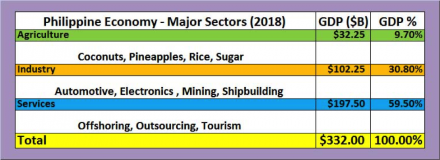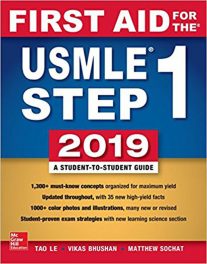Nearly 200,00 Indians Got ‘Green Cards’ In 2014, 2015, and 2016
(Second of Two Parts)
By Kumar Balani
NEW YORK, NY, October 14, 2018 – A good, highly fulfilling life is available to you if you have the needed information coupled with a ‘can-do’ attitude. Our purpose with this column is to provide you useful and usable knowledge, as we have been doing from the start. But your attitude is really up to you. Below, we provide you more good news and some bad news as well, so you can develop a realistic view of the immigration picture here in the US. So here it is:
People from China were the most numerous with 221,127 accounting for 17.44 percent, followed by 197,522 from India, constituting 15.58 percent. Third and fourth in rank among Asians were 153,549 from the Philippines and 58,618 South Koreans constituting 12.1 percent and 4.62 percent respectively. Together 630,816 lawful immigrants came from these four countries in the 2014-2016 period, constituting almost 50 percent of all Asians.
150,000+ Filipinos Got ‘Green Cards’ and 116,000+ Got US Citizenship in 2014, 2015, 2016
In the 2014 to 2016 three-year period, 153,549 people from the Philippines were granted lawful permanent residence in the United States through a variety of legal avenues or conversions from temporary visas. Figures on different forms of status adjustment were sourced from various units of the US Department of Homeland Security (DHS).
Filipinos (and others from the Philippines, notably Chinese and Indians) constituted a mere 4.72 percent of the total around 3.25 million people who received the coveted ‘green cards’ during 2014, 2015, and 2016. Data from 2017 on new immigrants are not yet available.
A step beyond receiving permanent residence is becoming a citizen of the United States that enables you to vote, and get other privileges and rights that non-citizens are not entitled to. Over two million (2,136,735) permanent residents became US citizens between 2014 and 2016 from 2,529,037 applicants, an astounding success rate of almost 85 percent! Of these newly-minted US citizens, 116,691 were from the Philippines with records based on country of birth.
56,000+ Filipinos Were Sent Back Home!
All of the above is good news. The bad news is that just within these three years, 56,188 other people from the Philippines who attempted to come into the US did not even make it beyond the various entry ports’ immigration areas, to get into the country! Why? They were classified as ‘inadmissible’ for a number of reasons, so they were ‘returned’ home, as the DHS describes this unwelcome outcome for Filipinos, along with 398,819 people from all over the world.
What does the fact that nearly 400,000 intending immigrants from around the world being ‘returned’ tell us? You need to do your homework! The motto Know Before You Go is often printed in US Customs and Border Protection (CBP) brochures. On inadmissibility, we have so far not yet been able to discover and obtain a list of causes and reasons with corresponding numbers, but it is certainly a priority on our journalistic to-do list.
Only 261 Filipinos Were Deported for Criminal and Non-Criminal Offenses
A more severe act is of course, deportation. In DHS parlance, the word used is ‘removal’ and while this was imposed on a very small number of people from the Philippines – just 261- it is important for you to discover why, so you can avoid those deportees’ blunders. We’ll try as well.
With reference to total deportation numbers, in the three years – 2014, 2015, and 2016 – over a million (1,072,607) people were deported or ‘removed’ for ‘criminal’ and ‘non-criminal’ offenses. Most of them had come in from Mexico, presumably by illegally crossing various points of the ‘border’ with the United States. Indeed, 490,609 people or almost 46 percent of those deported were Mexicans.
We put the word border in quotes because in reality there are really no physical indications of a border with Mexico anywhere along its 1,954-mile length except at some urban area crossings for vehicles. You can however see the separation of the two countries in atlases and maps.
490,000+ Mexicans + 151,000+ from El Salvador, Guatemala, and Honduras Deported!
Add to the 490,609 Mexicans deported the 151,494 combined number of the next three largest domiciles of other illegal aliens – from Guatemala (67,458), Honduras (43,782), and El Salvador (40,254) – and you come up with a total of 642.103 together, constituting almost 60 percent of all the million-plus people deported in 2014-16.
Here’s the bottom line lesson: For intending immigrants, a lot of education, effort, expense, and even wrenching emotions are invested into the laborious and lengthy process of coming into the United States, availing of career or business opportunities, and working hard towards success. So why not learn about, and avoid the pitfalls that might lead you into possible deportation?
We attempted to dig into the various causes as to why they were deported or sent back home, but within the gargantuan 240,000 network of the DHA spread around its 14 component agencies located around the entire United States, we realized that the answers we are seeking will require quite a lot of work, and vast amounts of time.
Phone messages have been left for people in-the-know about immigration matters. They may provide us guidance, or perhaps, a clear path to the answers we are seeking.
Meanwhile, it is important to know the latest movement trends on what world regions and particular countries from where the 3.25 million new immigrants came from. So here in this column, we provide you a broad breakdown:
Big Picture on 3.25 Million New US Immigrants: Roughly 40% Each from Americas, Asia
On top of the breakdown are people from the Americas. This world region includes the Caribbean, Central and South America, as well as Mexico and Canada. There were 1.342 million from these places who became legal permanent residents in 2014-2016. It was the largest legal immigration source, accounting for more than two-fifths (41 percent) of the total 3.25 million lawfully-admitted permanent residents in the US.
Another nearly two-fifths (39 percent of 3.25 million) came from Asia, numbering 1.27 million people in this three-year period, constituting the second largest regional origin of these new lawful US immigrants. Those from the Philippines were 12.1 percent of the total, representing around one among every eight from Asia.
Chinese and Indians: Most Numerous Asian Immigrants to US
People from China were the most numerous with 221,127 accounting for 17.44 percent, followed by 197,522 from India, constituting 15.58 percent. Third and fourth in rank among Asians were 153,549 from the Philippines and 58,618 South Koreans constituting 12.1 percent and 4.62 percent respectively. Together 630,816 lawful immigrants came from these four countries in the 2014-2016 period, constituting almost 50 percent of all Asians.
People from Africa and Europe were the third and fourth largest population origins of the recent US immigrants. They numbered 304,265 and 276,622 respectively, and constituted 9.35 percent and 8.51 percent respectively, of all these new immigrants.
The balance 60,108 immigrants constituted just 1.85 percent of the total. Of these, 41,412 or nearly 7 in 10 did not specify their countries of origin, while the remaining 18,696 came from Australia, New Zealand and other areas in Oceania region.
Kumar (Kem) Balani has an AB Journalism degree from the University of the Philippines and an MA in Politics from New York University. He is founder and publisher of Biz India Online News since 2002. Go to www.BizIndia.net to read book reviews, and news and features on business, investing, technology, and more.
This article first appeared in the Sunday, October 14, 2012 issue of the Daily Tribune in the Philippines
Click here to read and comment on all columns of Kumar Balani in the Daily Tribune in the Philippines: http://tribune.net.ph/index.php/author/kumar-balani/








